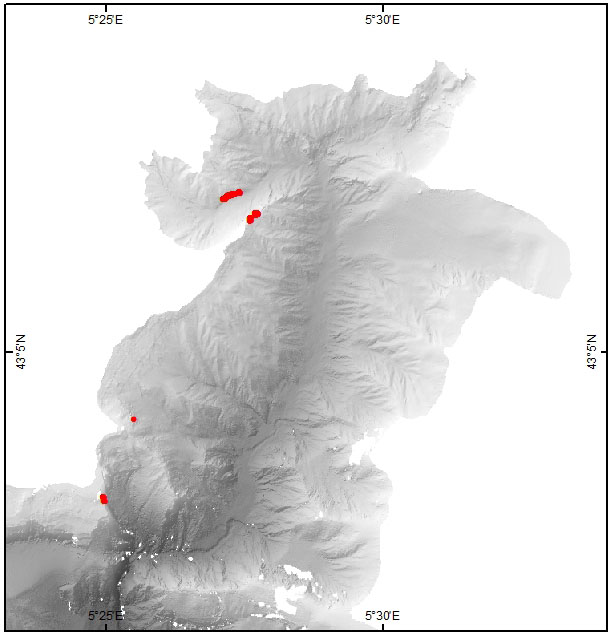Cold-Water Corals
Type of resources
Available actions
Topics
INSPIRE themes
Keywords
Contact for the resource
Provided by
Formats
Representation types
Scale
-
In the Mediterranean deep-sea two scleractinian species, Lophelia pertusa (= Desmophyllum pertusum) and Madrepora oculata, make up the dominant structure-forming corals. The Lacaze-Duthiers canyon is the only French Mediterranean canyon where the two species L. pertusa and M. oculata have been observed living together in large quantities, the situation generally described for the biocoenosis of cold-water corals (CWC). In this canyon large colonies (more than 40 cm) of both species of scleractinians were observed at depths ranging from 246 m to 541 m at the head of the canyon and its western flank. The second canyon is the Cassidaigne canyon, where M. oculata seems to be the only structure-forming scleractinian there. The largest concentration of M. oculata colonies was observed on the west flank of the canyon along a crest at depths ranging from 200 to 210 m. Mature M. oculata colonies attained heights up to 40 cm. M. oculata were observed in three other canyons: Bourcart, Sicié and Var. In the Bourcart canyon, M. oculata was observed on a shelf of hard substratum at 331 m depth. Several single branches protruded from a slab. In the Sicié canyon a 15-cm colony of M. oculata was observed at 255 m depth, while in the Var canyon, three young branches 2 cm long were seen growing at 350 m depth on a wall of hard rock. Data linked to the publication Fabri et al, 2014. https://doi.org/10.1016/j.dsr2.2013.06.016.
-

Distribution des coraux d’eaux froides Madrepora oculata (Scleréctiniaires) obtenue pendant la campagne VIDEOCOR1 en 2017 dans le canyon de Cassidaigne, Méditerranée Ouest. Les colonies de coraux ont été filmées/photographiées au cours de la campagne VIDEOCOR1 par le H-ROV Ariane (L’Europe, 2017). Les images ont été utilisées pour réaliser des modèles 3D de chaque zone. Chaque colonie de Madrepora oculata a été positionnée à la main sur les modèles géoréférencés. Données liées à la publication Fabri et al., 2019. https://doi.org/10.1016/j.pocean.2019.102172
-

Surface connue occupée par les coraux d’eaux froides Madrepora oculata (Scleréctiniaires) dans le canyon de Cassidaigne, Méditerranée Ouest. Les surfaces ont été mesurées d’après les images enregistrées au cours de la campagne VIDEOCOR1 par le H-ROV Ariane (L’Europe, 2017). Les images ont été utilisées pour réaliser des modèles 3D de chaque zone. Chaque colonie de Madrepora oculata a été positionnée à la main sur les modèles géoréférencés. Une couverture en 3-Dimensions a ainsi pu être mesurée. La couverture en 2-Dimensions a été mesurée sur un plan horizontal après transfert des points dans un SIG. La pression anthropique visible est aussi indiquée. Données liées à la publication Fabri et al., 2019. https://doi.org/10.1016/j.pocean.2019.102172
 Mon GéoSource
Mon GéoSource